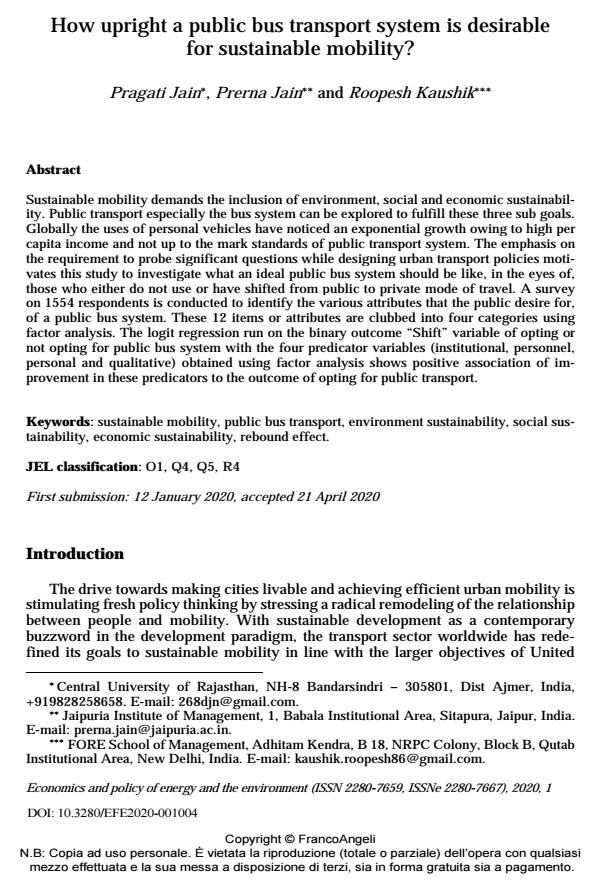How upright a public bus transport system is desirable for sustainable mobility?
Journal title ECONOMICS AND POLICY OF ENERGY AND THE ENVIRONMENT
Author/s Pragati Jain, Prerna Jain, Roopesh Kaushik
Publishing Year 2020 Issue 2020/1
Language English Pages 15 P. 47-61 File size 199 KB
DOI 10.3280/EFE2020-001004
DOI is like a bar code for intellectual property: to have more infomation
click here
Below, you can see the article first page
If you want to buy this article in PDF format, you can do it, following the instructions to buy download credits

FrancoAngeli is member of Publishers International Linking Association, Inc (PILA), a not-for-profit association which run the CrossRef service enabling links to and from online scholarly content.
Sustainable mobility demands the inclusion of environment, social and economic sustainabil-ity. Public transport especially the bus system can be explored to fulfill these three sub goals. Globally the uses of personal vehicles have noticed an exponential growth owing to high per capita income and not up to the mark standards of public transport system. The emphasis on the requirement to probe significant questions while designing urban transport policies moti-vates this study to investigate what an ideal public bus system should be like, in the eyes of, those who either do not use or have shifted from public to private mode of travel. A survey on 1554 respondents is conducted to identify the various attributes that the public desire for, of a public bus system. These 12 items or attributes are clubbed into four categories using factor analysis. The logit regression run on the binary outcome "Shift" variable of opting or not opt-ing for public bus system with the four predicator variables (institutional, personnel, personal and qualitative) obtained using factor analysis shows positive association of improvement in these predicators to the outcome of opting for public transport.
Keywords: Sustainable mobility, public bus transport, environment sustainability, social sus-tainability, economic sustainability, rebound effect.
Jel codes: O1, Q4, Q5, R4
Pragati Jain, Prerna Jain, Roopesh Kaushik, How upright a public bus transport system is desirable for sustainable mobility? in "ECONOMICS AND POLICY OF ENERGY AND THE ENVIRONMENT" 1/2020, pp 47-61, DOI: 10.3280/EFE2020-001004